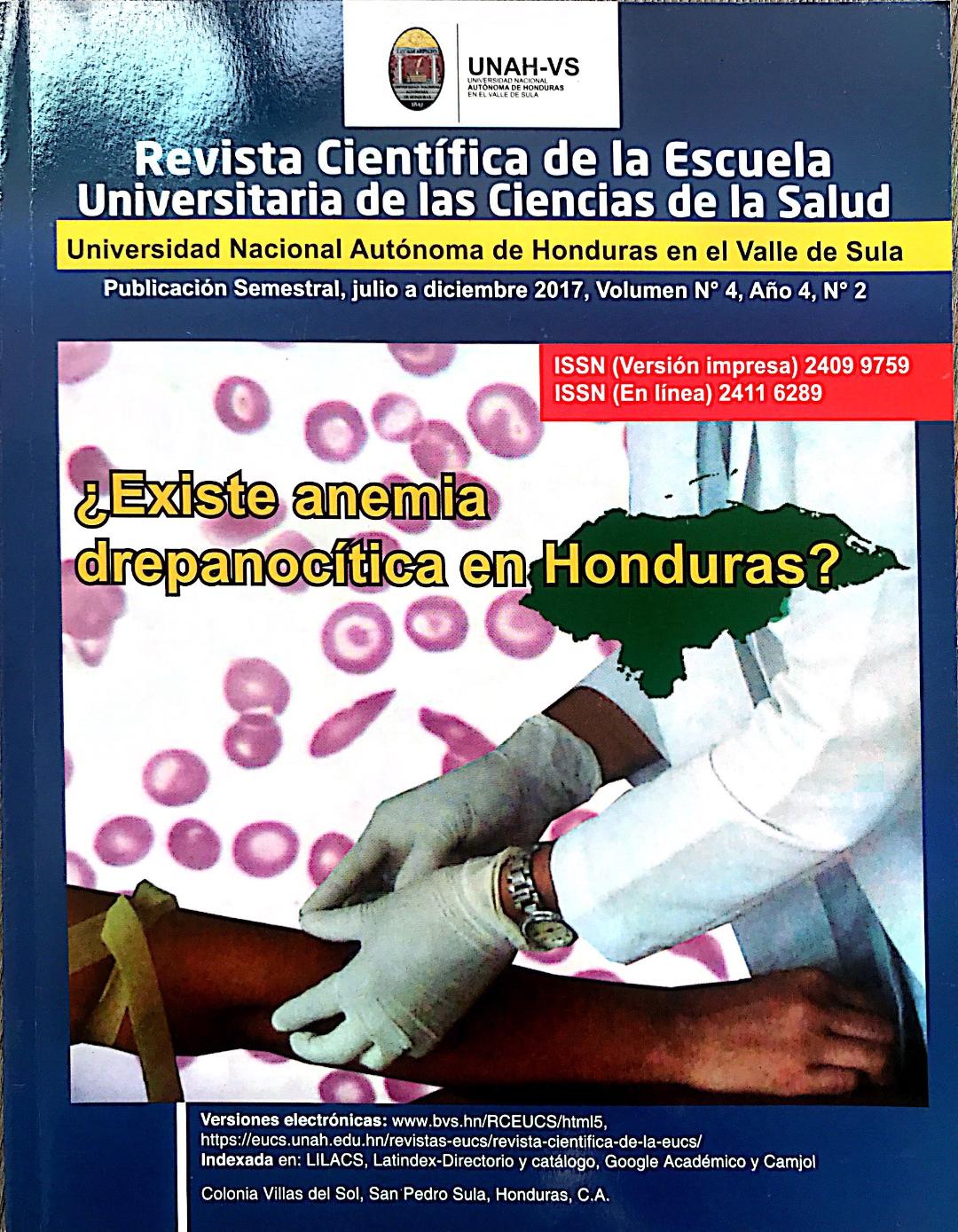Prevalence of sickle-cell anemia in two communities Omoa Cortés, during the year 2017
DOI:
https://doi.org/10.5377/rceucs.v4i2.7103Abstract
Sickle cell anemia (AD) is the most common congenital hemolytic anemia in the world. The frequency of carrier status of hemoglobin S (AS) covers a ranges from 5 to 15% of the world's population. Objective: To identify the prevalence of sickle cell anemia in the communities of Masca and Pueblo Nuevo, Omoa Cortés, during the year 2017. Patients and Methods: study with quantitative approach, non-experimental design, longitudinal and descriptive scope. A random probabilistic sample of 369 was calculated. The first phase of the study included the accomplishment of hemogram and 2% sodium metabisulphite, the second phase consisted in the electro- phoresis of hemoglobin to patients with positive metabisulphite. The tests were processed in a certified clinical laboratory. The data were analyzed with SPSS. Results Of the 369 participants, the ages ranged from 1-83 years, 250 (67.8%) were female, and 119 (32.2%) were male hemoglobin values ranged from 7.85 to 17.4 g / dl and 20 were positive metabisulfite prevalence of 5.4%. In the second phase of the study, 13 (65%) of the patients were female, 12 (60%) were asymptomatic. Hemoglobin electrophoresis was performed, with 18 (94.7%) with HbAS and 1 (5.3%) patients with 100% HbSS.
Conclusion: is similar to other studies found, but it should be emphasized that the predominant race for heterozygotes was mestizo, not Afrodescendant.
Keywords
Anemia, Sickle Cell, Homozygote, Heterozygote, Prevalence
Downloads
1732




